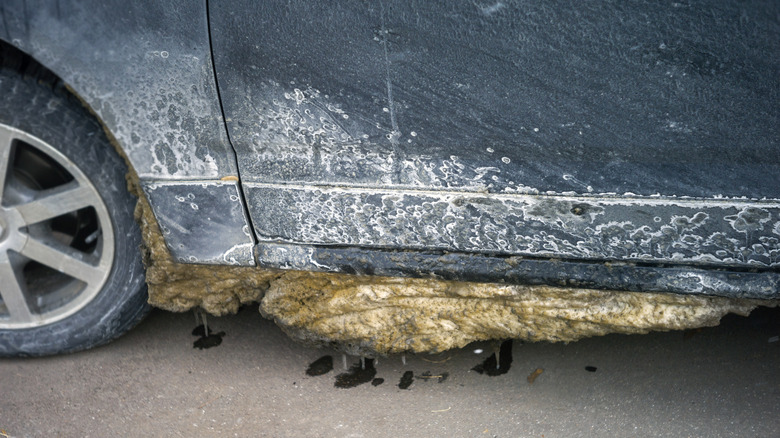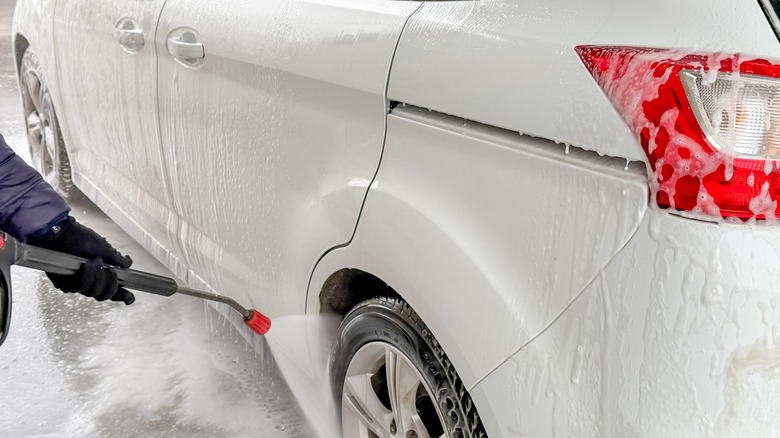Here's What Road Salt Can Do To Your Car (And How To Avoid The Damage)
Folks who live in climates prone to wintry weather would surely tell you that few sites are quite as beautiful as a landscape covered in freshly fallen snow. They'd likely also tell you that navigating the roadways in such weather is a royal pain in the butt. It's even more of a pain when you factor in that the sand and salt compounds used to clear roads of snow and ice are prone to collecting on your car as you drive.
The latter fact wouldn't be all that problematic if the road salt wasn't also capable of causing serious damage to your vehicle once it collects there. After all, road salt generally consists of a mixture of regular sodium chloride (aka table salt) and various other chemicals designed to lower the freezing point of water, thus helping to melt ice and snow into a slushy brine that tends to be less prone to re-freezing. While it's helpful in making snowy roads passable for drivers, the salt and brine easily collect on vehicles as they drive through. If you don't tend to the buildup, it can damage paint and cause corrosion in other parts of a car.
That's particularly true for a vehicle's undercarriage, which features exposed metal components that are prone to rust and corrosion if salty brine is not removed. Paint is also prone to discoloration and peeling after prolonged exposure to road salt, with brake rotors, exhaust systems, and electrical components also susceptible to such damage.
There are several ways to prevent damage from road salt
Right about now, you might be wondering what you can do to limit the damage of road salt and brine or even avoid it altogether. If you are looking to completely avoid such damage, the most effective tactic is not to drive your car, truck, or sport utility vehicle when road salt and brine are present on the roadways.
That option is not entirely realistic for much of the snow-dwelling population, of course, as the world doesn't just stop whenever the white stuff appears. If you do need to hit the road after the salt trucks have already been out, there are things you can do to limit the damaging effects of road salt and brine. First and foremost, when the foul weather breaks and the roads are looking clear of salt and brine, it's always a good idea to break out the hose and rinse the buildup away from your vehicle, paying specific attention to the undercarriage as you do so.
If you've stowed your hose away for the harsh winter months, you can also remove the excess salt and brine buildup by making a trip to a local car wash, though they are typically busy, busy, busy during those periods. Apart from regular rinsing, the use of approved clear coat protectants or ceramic coatings can also help protect your vehicle from road salt damage, as can the regular application of car wax. Likewise, a protective undercoating for your vehicle's undercarriage is one of several ways to limit the potential for rust.

